 1988 Mitsubishi Lancer IV Dimensions, Size & Specs
1988 Mitsubishi Lancer IV Dimensions, Size & SpecsMeasurements of the 1988 Mitsubishi Lancer IV, engineered for optimal performance and comfort
| Dimensions | |
|---|---|
| Length: | 4235 mm166.7 in13.9 ft |
| Width: | 1670 mm65.7 in5.5 ft |
| Height: | 1405 mm55.3 in4.6 ft |
| Trunk Capacity: | 337-377 liter11.9-13.3 cu ft |
| Weight Specifications | |
| Curb Weight: | 880-1135 kg1940-2502 lbs |
| Maximal permitted Weight: | 1465-1620 kg3230-3571 lbs |
| Tire Specifications | |
| Rims Sizes: |
|
| Tire Sizes: |
|
The Mitsubishi Lancer IV, produced from 1988 to 1994, is a compact sedan that balances practicality with efficient design. Measuring 4235 mm (166.7 inches) in length, 1670 mm (65.7 inches) in width, and 1405 mm (55.3 inches) in height, the Lancer IV fits comfortably within the compact car category of its era. Its curb weight ranges from 880 to 1135 kg (1940 to 2502 lbs), depending on configuration, while the maximum permissible weight lies between 1465 and 1620 kg (3229 to 3572 lbs), allowing for a robust yet nimble driving experience. The luggage capacity spans from 337 to 377 liters (11.9 to 13.3 cubic feet), offering practical storage space for daily commuting and light travel needs. This generation of the Lancer accommodates rim sizes of 13 and 14 inches coupled with tire options such as 155/80 R13, 175/70 R13, and 185/50 R14, providing a range of handling and comfort preferences. The overall dimensions, weight, and tire variety of the Mitsubishi Lancer IV underscore its versatility as a reliable and user-friendly sedan suited for urban and suburban environments.
Discover the standout features that make the 1988 Mitsubishi Lancer IV a leader in its class
Have a question? Please check our knowledgebase first.
The Mitsubishi Lancer IV, produced from 1988 to 1994, is a compact sedan with dimensions measuring 4235 mm (approximately 166.7 inches) in length, 1670 mm (about 65.7 inches) in width, and 1405 mm (around 55.3 inches) in height. These dimensions classify it as a practical and moderately sized vehicle, suitable for urban commuting and daily use, offering a balanced profile combining manageable exterior size with interior space efficiency.
The Mitsubishi Lancer IV's curb weight ranges between 880 kg and 1135 kg (approximately 1940 to 2500 lbs), which reflects the car's baseline weight without any passengers or cargo. It has a maximum permissible weight spanning from 1465 kg to 1620 kg (about 3230 to 3570 lbs), representing the heaviest the vehicle can safely carry including passengers, fuel, and luggage. This range indicates a relatively lightweight sedan that balances fuel efficiency with a reasonable load capacity for a four-door vehicle.
The Mitsubishi Lancer IV offers a luggage capacity ranging from 337 liters to 377 liters (approximately 11.9 to 13.3 cubic feet), which was competitive for compact sedans in the late 1980s to early 1990s. This trunk space allows enough room for daily groceries, small luggage, or equipment, making it suitable for typical family or personal use. Compared to similar models of its time, the Lancer IV's cargo volume is adequate though not outstanding, prioritizing passenger comfort and vehicle agility.
Yes, the Mitsubishi Lancer IV can comfortably fit inside a standard single-car garage. With an overall length of 4235 mm (166.7 inches), width of 1670 mm (65.7 inches), and height of 1405 mm (55.3 inches), it stays well within typical garage dimensions. Most standard garages measure around 6 meters (about 236 inches) in length and 3 meters (about 118 inches) in width, providing sufficient space for the Lancer IV with room to walk around and open doors without difficulty. This makes it convenient for indoor parking and protection from weather elements.
The Mitsubishi Lancer IV comes equipped with rim sizes of 13 or 14 inches paired with tire sizes of 155/80 R13, 175/70 R13, or 185/50 R14. These tire and rim combinations contribute to a comfortable ride and agile handling suited for urban and suburban driving conditions. The relatively narrower and taller tires (e.g., 155/80 R13) provide better cushioning on rough roads, improving ride comfort. In contrast, the wider and lower profile tires (like 185/50 R14) enhance grip and cornering stability, benefiting spirited driving. Overall, these options allow varied configurations depending on the owner's preference for comfort or sportiness.
While exact interior dimensions are not specified, the Mitsubishi Lancer IV’s exterior size (length 4235 mm, width 1670 mm) supports a reasonably spacious cabin for a compact sedan. This size generally allows comfortable seating for four adults with adequate legroom and headroom, although rear passenger space might be slightly tight for taller individuals typical of compact sedans of that era. The car’s efficient packaging helps balance passenger comfort with exterior maneuverability, making it a practical choice for daily commuting and small family use when compared to similar sedans from the late 1980s and early 1990s.
The Mitsubishi Lancer IV (1988-1994) is generally larger and slightly heavier compared to its predecessor, the third-generation Lancer. With a length of 4235 mm and width of 1670 mm, it shows modest increases in exterior dimensions, offering improved interior space and comfort. The curb weight (880 to 1135 kg) also reflects enhancements in build quality and added features, contributing to a more solid and safer vehicle. These dimension and weight increments typically translate to better ride quality, stability, and refinement while retaining maneuverability, making the Lancer IV a practical evolution from the previous generation.
The Mitsubishi Lancer IV stands competitively among compact sedans of its era such as the Toyota Corolla, Honda Civic, and Nissan Sentra. In terms of size, its 4235 mm length and 1670 mm width align closely with these rivals, striking a balance between interior space and ease of parking. Notably, the Lancer IV typically offers solid construction and efficient use of space, with luggage capacity of 337–377 liters rivaling that of competitors. Its lightweight design (curb weight ranging from 880 to 1135 kg) helps provide nimble handling and better fuel economy, making it a practical and versatile choice for consumers seeking reliable daily transportation.
The Mitsubishi Lancer IV's height of 1405 mm (about 55.3 inches) plays an important role in balancing aerodynamic efficiency and interior headroom. This relatively low stance helps reduce air resistance, improving fuel efficiency and contributing to stable high-speed handling. At the same time, it creates a modest cabin height that offers adequate headroom for most occupants, particularly in the front seats. The lower profile also adds to the car’s sporty and streamlined design, appealing to buyers who want a stylish sedan without sacrificing everyday comfort.
The Mitsubishi Lancer IV's curb weight varies between 880 kg and 1135 kg (roughly 1940 to 2500 lbs), depending on the specific trim and equipment. This relatively light weight benefits vehicle performance by enabling quicker acceleration, easier braking, and more agile handling compared to heavier vehicles. From a fuel economy perspective, a lighter curb weight generally leads to improved efficiency, making the Lancer IV economical to run especially with smaller displacement engines common in this generation. However, weight variations might also affect ride comfort and stability, so owners should balance trim levels with desired performance and fuel savings.
Discover similar sized cars.
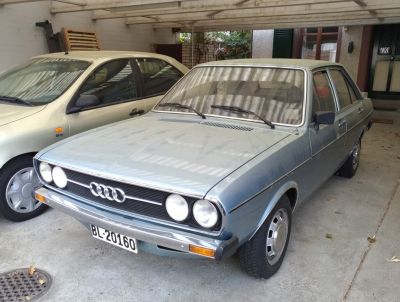
| Production: | 1972-1976 |
|---|---|
| Model Year: | 1972 |
| Length: | 4175-4220 mm164.4-166.1 in |
| Width: | 1600 mm63.0 in |
| Height: | 1362 mm53.6 in |
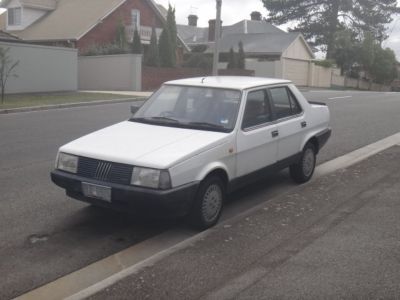
| Production: | 1983-1990 |
|---|---|
| Model Year: | 1984 |
| Length: | 4260 mm167.7 in |
| Width: | 1650 mm65.0 in |
| Height: | 1410 mm55.5 in |
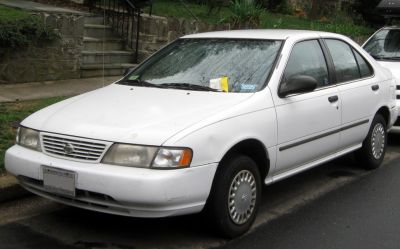
| Production: | 1994-1999 |
|---|---|
| Model Year: | 1995 |
| Length: | 4230 mm166.5 in |
| Width: | 1670 mm65.7 in |
| Height: | 1395 mm54.9 in |

| Production: | 1996-2003 |
|---|---|
| Model Year: | 1996 |
| Length: | 4277 mm168.4 in |
| Width: | 1676 mm66.0 in |
| Height: | 1430 mm56.3 in |

| Production: | 2001-2012 |
|---|---|
| Model Year: | 2001 |
| Length: | 4235 mm166.7 in |
| Width: | 1670 mm65.7 in |
| Height: | 1395 mm54.9 in |

| Production: | 2001-present |
|---|---|
| Model Year: | 2001 |
| Length: | 4290 mm168.9 in |
| Width: | 1690 mm66.5 in |
| Height: | 1430 mm56.3 in |
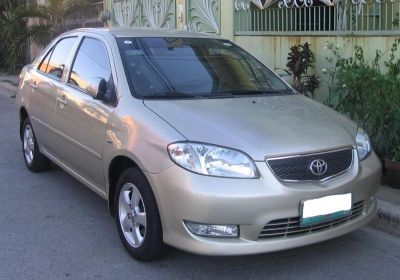
| Production: | 2002-2007 |
|---|---|
| Model Year: | 2002 |
| Length: | 4285 mm168.7 in |
| Width: | 1695 mm66.7 in |
| Height: | 1435 mm56.5 in |
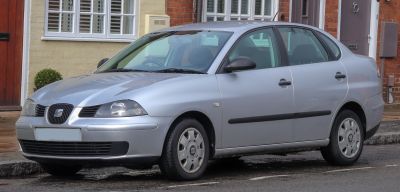
| Production: | 2002-2008 |
|---|---|
| Model Year: | 2003 |
| Length: | 4280 mm168.5 in |
| Width: | 1698 mm66.9 in |
| Height: | 1441 mm56.7 in |
